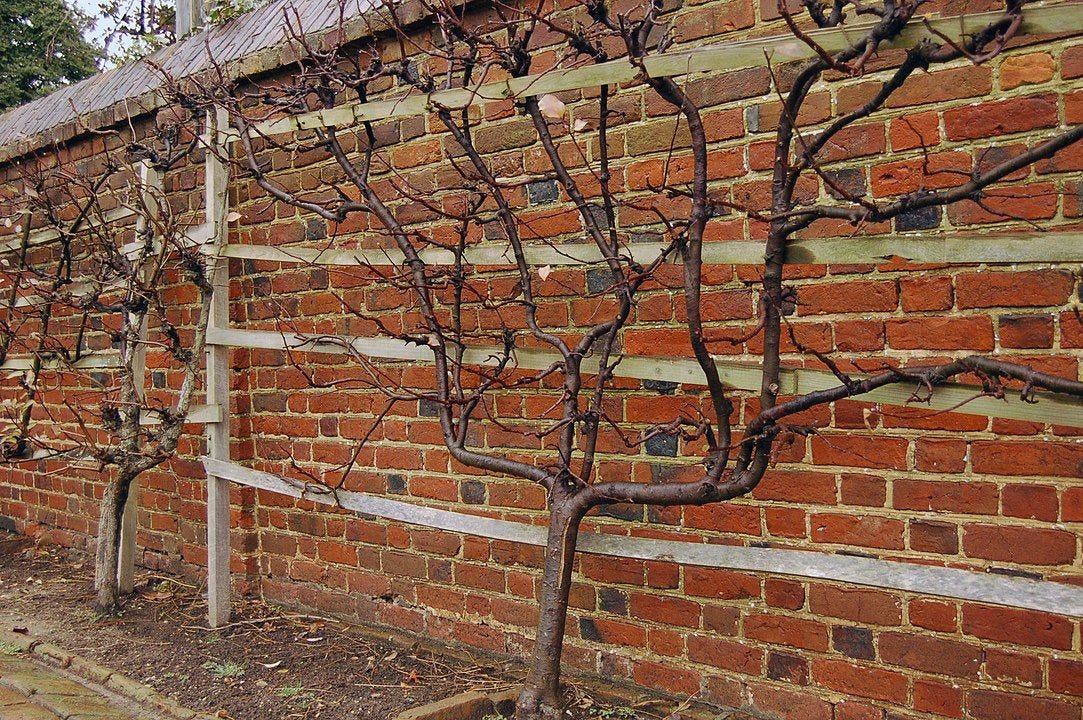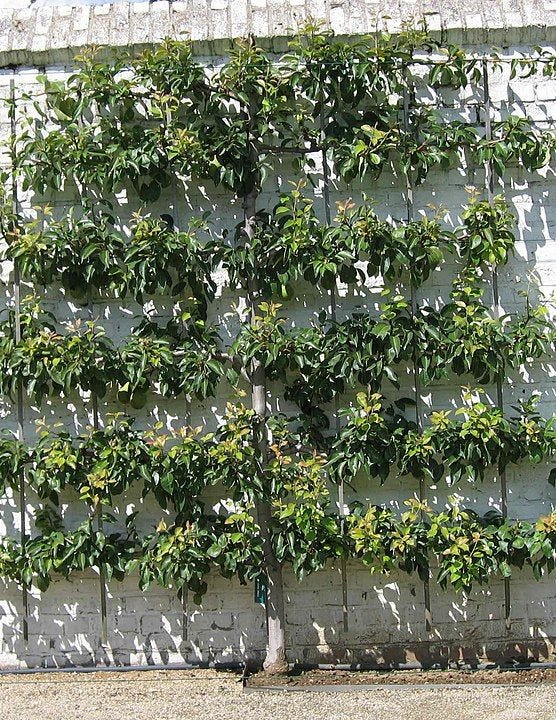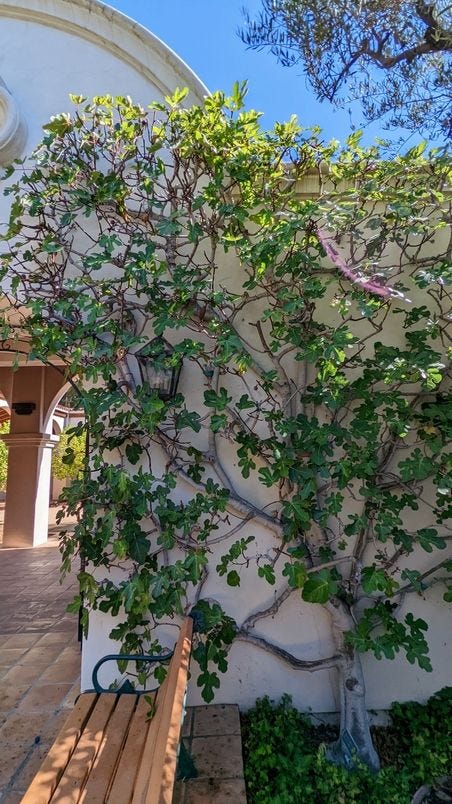Espalier
Espalier is a method of horticulture used to control the growth of a plant on a flat plane when grown against a wall, fence or trellis.
Espalier is a method of horticulture used to control the growth of a plant on a flat plane when grown against a wall, fence or trellis. Espalier is derived from the Italian spalliera, meaning "something to rest the shoulder (spalla) against". The word is used to describe both the espalier method as well as individual espaliered plants.
Gardeners in ancient Rome invented the espalier method of growing plants. The method became popular in Medieval Europe as a way to grow fruit trees inside the walls of castle courtyards and not take up too much space by growing them flat against a wall. The stone walls absorb heat and allow for fruit to ripen more quickly. This made espaliers most popular in northern Europe where the climate is not always hospitable to growing fruit. Today, espalier trees and shrubs are used more for decorative purposes than they are for fruit production.
Espalier Design
Espalier Trees and shrubs are grown with strict control over their shape. To keep the espalier flat, it's stem and main branches are tied to its supporting surface. The ties dictate the style of the espalier which can take many forms depending on the whim of the gardener and the nature of the espalier's growth pattern. In Charles McIntosh's 1853 "The Book of the Garden", 10 of the most popular styles are detailed. This book is a fantastic recorded example of how espalier was applied in Victorian gardens.

Of the different styles, the ones that maintain a naturally straight main trunk such as the fan styles tend to be the easiest to accomplish.
Cordon
For home gardeners today, the style most often used is the Cordon. The cordon style is where a plant is grown as a single upright stem. The most common form is the horizontal cordon where the branches are directed in horizontal tiers running perpendicular to the main stem. Sometimes, the plant will have only one tier, and this is known as a "stepover".
Another variation of this style is the angled cordon, where the stem is grown at a 45 degree angle from the ground with no branches, allowing this form to be repeated to create a row of plants in a small space.

Creating your own espalier
Plant nurseries often sell espalier versions of plants already trained to a trellis staked into the pot. These will generally be the multi-tiered horizontal cordon form. This is the easiest way to create an espalier as you will have a relatively mature plant that is ready to be planted and create the effect instantly.
The disadvantage to using a nursery espalier is that the trellis may be smaller than the wall you wish to cover. This can be difficult to remove without damaging the plant so be sure to check the plant is not too entangled into and only attached to one side of the trellis.
Espalier Species
To start your own espalier you need to ensure the plant is suitable for this. Fruit trees have the longest history of use as espaliers and those that produce fruit on long lived branches are the easiest to espalier. Apple, Pear and Fig trees are the most amenable to espalier and are the most common examples. with these trees, you can easily find supporting advice from gardener forums or a local nursery using these. Generally speaking, any woody plant with long flexible branches is suitable for espalier. In Southern California I have worked with Fig (Ficus carica), Toyon (Heteromeles arbutifolia), Chinese Podocarpus (Podocarpus macrophyllua var. maki) and Bouganvillea as espalier specimens.
Choose an espalier style
Once a plant is selected, the espalier style needs to be decided. The supports for the espalier will dictate it's form. As they need to be installed behind where the plant is growing the design cannot be easily changed at a later time. If you choose to grow the espalier using a natural form like the Fig tree above, this is less of a concern as you will be tying the branches back to the wall as they grow. For a formal design, the layout must be decided at the offset.
The espalier is traditionally supported on wood and a modern method is to use stainless steel cables. The plants should be planted so that it's crown is at least 8" from the wall to allow for air flow.


Espalier Training
An espalier should be pruned so that new growth faces the direction you want each branch to grow according to your chosen style. Tying the new flexible growth in Spring to the espalier frame will hold it in position until the wood hardens. The main pruning is done once annually when the plant is dormant (typically late winter/early spring). It can take 3-4 years to establish the basic framework of the design. For fruit trees, this process can delay the production of fruit for 5 years or more. Once the framework of the design is established, minor monthly pruning and shaping is needed.
If you are looking to fill in the espalier more quickly, find a nursery that offers espalier plants that were started in a pot.







